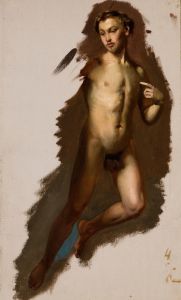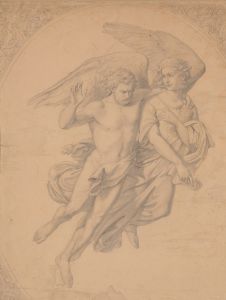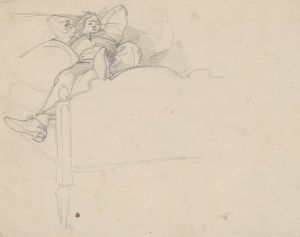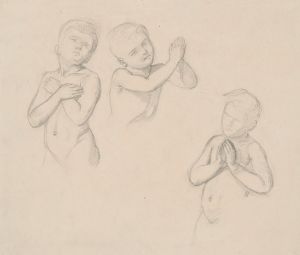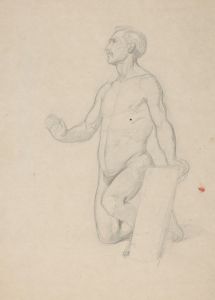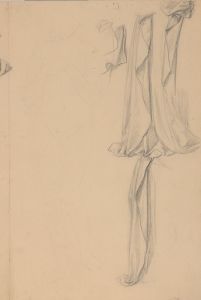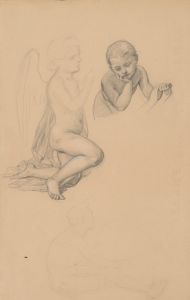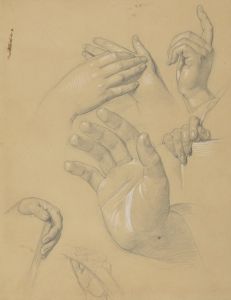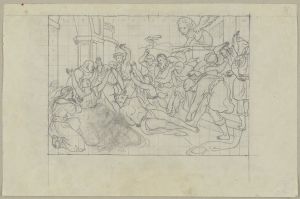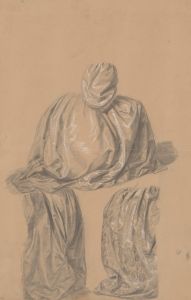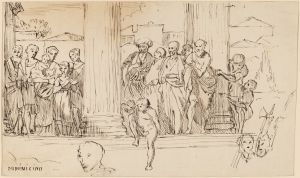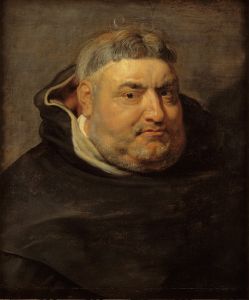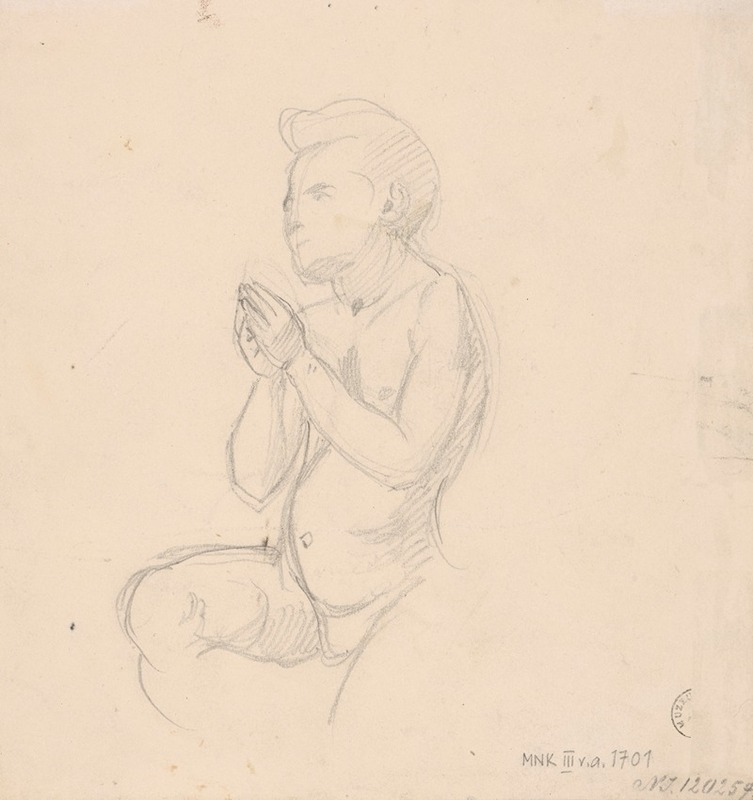
Sketch of angel for the painting ‘The Immaculate Conception’
A hand-painted replica of Józef Simmler’s masterpiece Sketch of angel for the painting ‘The Immaculate Conception’, meticulously crafted by professional artists to capture the true essence of the original. Each piece is created with museum-quality canvas and rare mineral pigments, carefully painted by experienced artists with delicate brushstrokes and rich, layered colors to perfectly recreate the texture of the original artwork. Unlike machine-printed reproductions, this hand-painted version brings the painting to life, infused with the artist’s emotions and skill in every stroke. Whether for personal collection or home decoration, it instantly elevates the artistic atmosphere of any space.
Józef Simmler, a notable Polish painter of the 19th century, is renowned for his contributions to religious and historical art. Among his works, the "Sketch of Angel for the Painting ‘The Immaculate Conception’" stands out as a preparatory piece for a larger, more elaborate composition. Simmler was born in 1823 in Warsaw, Poland, and he studied art in various European cities, including Dresden, Munich, and Paris, which were significant art centers of the time. His education and exposure to different artistic styles and techniques greatly influenced his work.
The "Sketch of Angel for the Painting ‘The Immaculate Conception’" is a testament to Simmler's meticulous approach to composition and detail. This sketch was part of his preparatory process for creating the final painting, "The Immaculate Conception," which is a depiction of the Virgin Mary, a common subject in Christian art. The Immaculate Conception refers to the belief in the Roman Catholic Church that Mary, the mother of Jesus, was conceived without original sin. This doctrine has inspired countless works of art throughout history, and Simmler’s interpretation contributes to this rich tradition.
Simmler’s sketch likely served as a study to explore the form, posture, and expression of the angelic figures that would accompany the Virgin Mary in the final painting. Such sketches are crucial in the artistic process, allowing the artist to experiment with different elements before committing to the final composition. The sketch would have been used to refine the details of the angel's anatomy, drapery, and the overall harmony of the figures within the painting.
Simmler’s work is characterized by its attention to detail and the delicate rendering of figures, which can be seen in the careful execution of the angel's features in the sketch. His style reflects the academic art traditions of the 19th century, which emphasized realism, precise draftsmanship, and the idealization of subjects. The sketch would have been executed in a medium such as pencil or charcoal, common tools for artists to quickly capture their ideas on paper.
The final painting, "The Immaculate Conception," would have been intended for a religious setting, possibly a church or a private chapel, where it would serve as an object of devotion and reflection. Simmler’s religious paintings often conveyed a sense of serenity and spiritual elevation, qualities that would have been important in a work depicting such a significant theological concept.
Józef Simmler passed away in 1868, but his works continue to be appreciated for their artistic merit and contribution to Polish cultural heritage. His sketches, including the "Sketch of Angel for the Painting ‘The Immaculate Conception’," provide valuable insight into his creative process and the artistic practices of his time. Through these preparatory works, viewers can gain a deeper understanding of how Simmler approached the challenge of translating complex religious themes into visual form.





